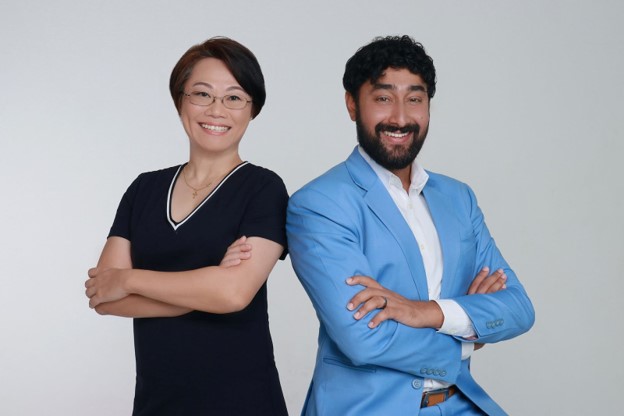According to the founder of Singapore-based telehealth platform Ora, 90% of its patients are less than 39 years old and have not been treated for their conditions offline. That puts the onus on Ora to make sure its patients, mostly millennials who live in cities, have a good experience. Ora wants to perform with verticals focused on specific health issues, like women’s and men’s health and skincare. They also run an end-to-end platform that handles everything from consultations to prescription delivery and post-care.
Today, Ora announced it has raised $10 million in Series A funding, which it says is the biggest telehealth Series A round in Southeast Asia. The investment was co-led by TNB Aura and Antler, with participation from Gobi Partners, Kairous Capital and GMA Ventures.
This brings Ora’s total raised since its inception in 2020 to $17 million. Ora was founded by Elias Pour, the former CMO of Zalora, and says it has had uninterrupted >20% month-over-month growth since it launched last year.
Pour told TechCrunch that while working at Zalora, he “saw a very clear trend from customers investing in looking good, driven by fashion buys that allowed them to express themselves, to feeling good, which is connected to physical appearance such as skin, hair, weight and overall well-being.” He started looking for segments that were underserved and found a major opportunity in healthcare.

Ora founder and CEO Elias Pour
Pour added that Southeast Asia has one of the highest out-of-pocket health expenditures globally, so there didn’t need to be a behavioral change in order to convince people to move to direct payments. “People are already used to paying out of pocket for their healthcare costs, suiting this category well for DTC.”
Ora says it has delivered over 250,000 doctor consultations since its launch in 2021. It has an end-to-end model, meaning it covers consultations, pharmacy, medication delivery and post-purchase care. Ora monetizes with subscriptions, with subscriptions accounting for more than 70% of its revenue.
Ora is vertically-integrated, and currently operates three brands. The first, called Modules, is focused on online dermatology consultations and prescription skincare. The second, andSons, offers male health care, and the third, OVA, treats female reproductive healthcare.
The platform primarily treats a young clientele. The company says that 90% of its patients are first to condition, under 38 years old and have never been treated before online. Younger patients demand flexibility and speed, which is why Ora’s telemedicine model is attractive to them.
Pour said that one of the challenges healthcare providers face in Southeast Asia is the “large disconnect between the patient population,” which skews young, and the legacy experience of healthcare. He believes that over the next decade, about 80% of healthcare services will be brought online.
“Today, men and women in their 20s and 30s living in capital cities represent 36% of the total population. It’s the fastest growing segment, forecasted to represent half of the population in most markets by 2030,” he said. Pour added that Ora is “establishing a strong relationship with them at this early stage, to earn their trust, remaining relevant to address the healthcare needs they will have as they age.”
Pour said Ora differentiates from other telehealth players like Doctor Anywhere, Speedoc and Alodokter because it focuses on specific health issues. Ora is also combining prescription, OTC and strong consumer products to provide post-treatment service and clinical continuity.
Ora’s new funding will be used to expand into new markets and brings its brands to more than 1,300 retail stores.
In a statement, TNB Aura founding partner Charles Wong said, “[Ora’s] combined focus on specialized, and often taboo, healthcare verticals as well as a direct-to-patient approach has led the team to clearly differentiate itself while delivering market-leading unit economics that meet the tailored needs of patients across the full value chain.”
Singapore’s Ora takes a vertically-integrated approach to telehealth by Catherine Shu originally published on TechCrunch

 The worlds of technology and healthcare are colliding like never before, and telemedicine is leading the charge. This article breaks down how telemedicine is changing the game by combining modern tech with traditional doctor visits — imagine virtual checkups, remote monitoring, and doctors who can talk to each other easily, all through a screen. We’ll explore how these changes are transforming how doctors and patients interact, making healthcare more convenient, effective, and focused on what matters most: patient care.
The worlds of technology and healthcare are colliding like never before, and telemedicine is leading the charge. This article breaks down how telemedicine is changing the game by combining modern tech with traditional doctor visits — imagine virtual checkups, remote monitoring, and doctors who can talk to each other easily, all through a screen. We’ll explore how these changes are transforming how doctors and patients interact, making healthcare more convenient, effective, and focused on what matters most: patient care. Imagine healthcare without walls or waiting rooms. Telemedicine is making this a reality. This article explores how virtual doctor visits and remote monitoring are changing the game. Think faster diagnoses, easier chronic care, and mental health support, all accessible from the comfort of your home. We’ll dive into the different ways telemedicine can bring healthcare closer to everyone, making it more efficient and putting patients back in control.
Imagine healthcare without walls or waiting rooms. Telemedicine is making this a reality. This article explores how virtual doctor visits and remote monitoring are changing the game. Think faster diagnoses, easier chronic care, and mental health support, all accessible from the comfort of your home. We’ll dive into the different ways telemedicine can bring healthcare closer to everyone, making it more efficient and putting patients back in control. Telemedicine has completely changed how healthcare professionals care for patients, becoming a driving force in the modern healthcare landscape. This article dives deep into the powerful impact of telemedicine, unpacking its many benefits that open the door to a new era of healthcare that’s easier to reach and more efficient. By exploring this topic, you’ll discover how technology is necessary to healthcare, offering advantages for patients and professionals alike.
Telemedicine has completely changed how healthcare professionals care for patients, becoming a driving force in the modern healthcare landscape. This article dives deep into the powerful impact of telemedicine, unpacking its many benefits that open the door to a new era of healthcare that’s easier to reach and more efficient. By exploring this topic, you’ll discover how technology is necessary to healthcare, offering advantages for patients and professionals alike.


